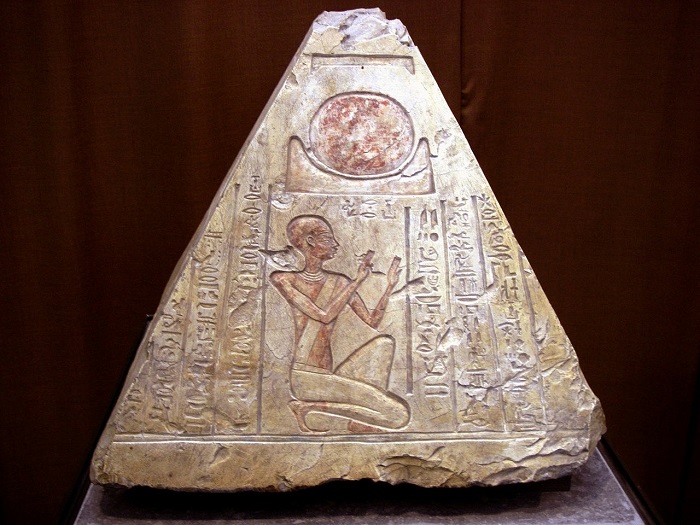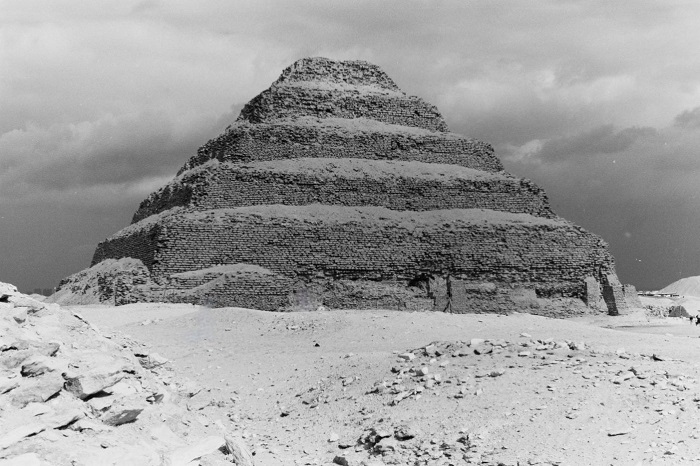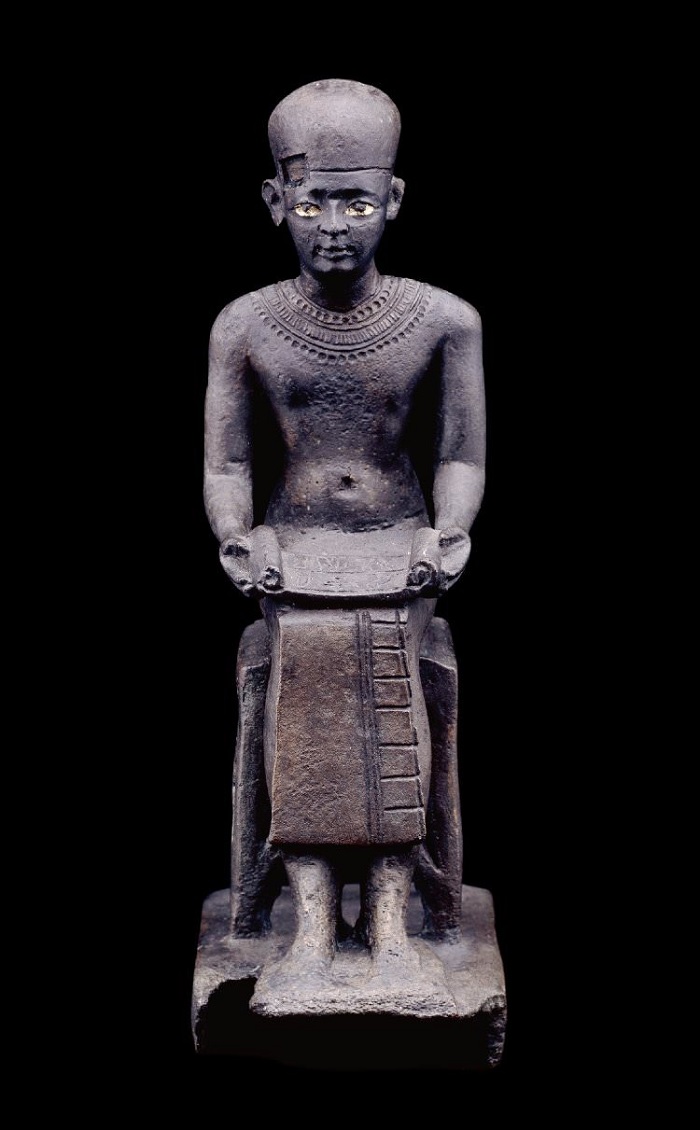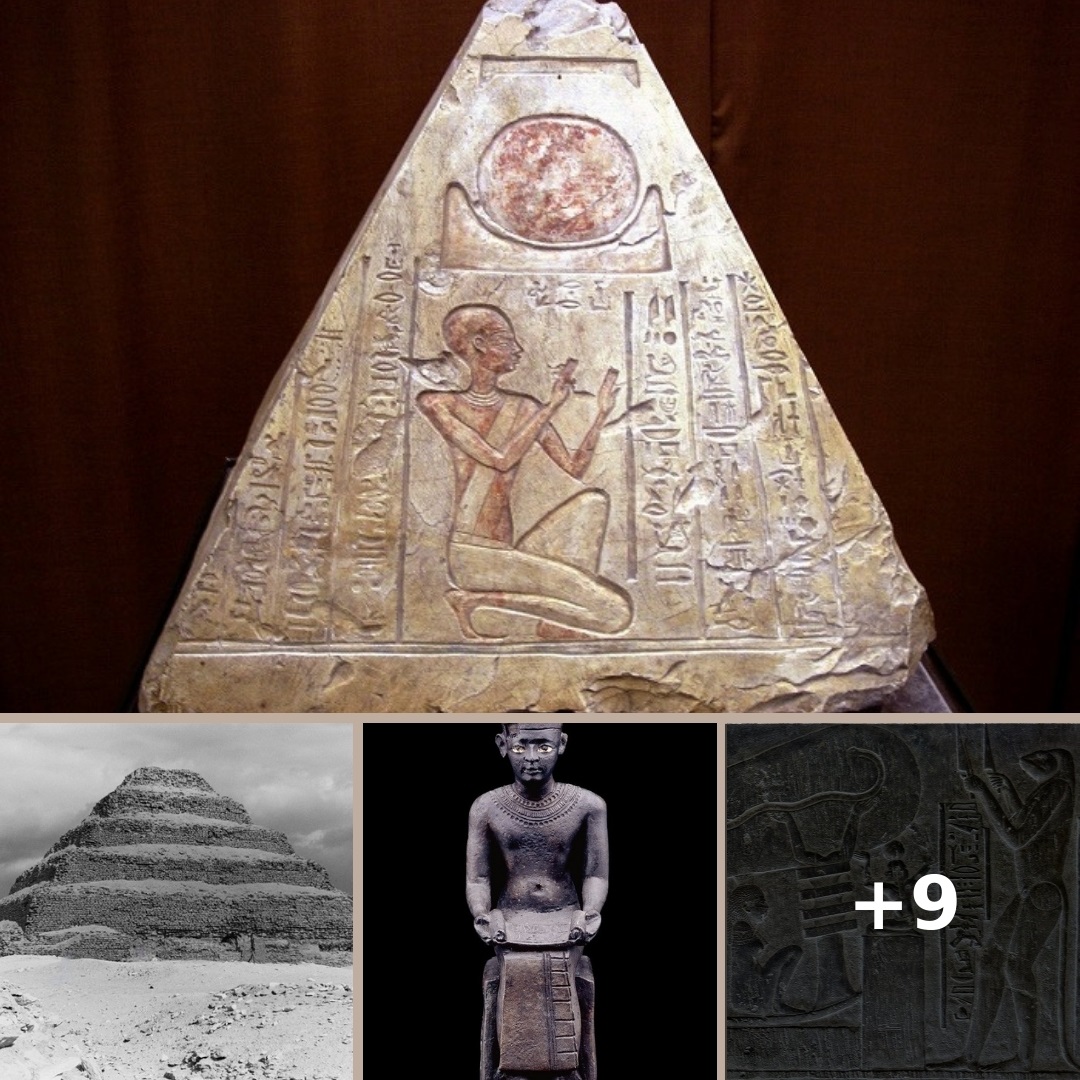The temple complex of the Sun god Ra in Heliopolis is associated with the name of ancient Egyptian architect, Imhotep. His main symbol was an odd, cone shaped stone, usually placed on high spots.

In Greek mythology, this sacred sun symbol was called a pyramidion. It should be the first thing that greets the sunrise and the last to see the sunset. The sun temple in Heliopolis is not only older than the first step pyramids, but, rather it was used as an example for other pyramidion temples.
According to Egyptologists, the first Egyptian step pyramids should be associated with direct observations of sun rays, penetrating the clouds moving towards the horizon. But this theory is not completely clear as to what is the connection between sun rays and step pyramids.
The pyramid of Djoser
On dry and sunny days the sunrise looks like a gradual growth of bright, elongated layers of light. A few seconds before sunrise, the sun does look like a step pyramid and then, after a short moment, it becomes the disc of light we see every day.
Meteorologists explain that the layered look of the sun occurs when sun rays bend at the atmospheric “prism”, but the view isn’t clear because layered atmospheric structures distort at the horizon. The bright pyramid of light resembles a giant creature emerging from the horizon. Now it is clear why the sun cult was incorporated in the belief system of ancient Egypt.

Construction of large pyramids began with the step pyramid of Djoser. But later, after continuous dynastic conflicts, Egyptians once again turned to flat pyramids. However, there are some well-preserved pyramidions.
It is possible that Imhotep built the pyramid with a more practical purpose. Pyramids of this kind could have been used as devices sending light signals, called heliographs. Signals can change direction, by covering different sides of the pyramidion. Those signals could have been used to warn about enemy invasions.

The ‘light telegraph’ in ancient Egypt
In Egyptian pyramids, the “light telegraphs” would have been able to operate even at night. Giant, almost flat, clay plates, filled with flammable oil, would be able to generate enough light to be reflected from the gilded sides of the pyramidion. The light would be visible from at least 10 km.
Some archaeologists and engineers believe that the main purpose of step pyramids was not burying the dead. Egyptian step pyramids acted like a unique telecommunication system, consisting of pyramidal dielectric resonators and refractory antennae.

According to this theory, all the tunnels, passages, ventilation shafts, burial chambers, and inner temples were used as waveguides, resonators, filters, etc.
The pyramids were made from granite and basalt, so electricity is out of the question, but “paleoelectricity” in ancient Egypt is something that continues to bother mainstream concepts of history. Let’s look at one, very odd ancient fresco popularly known as the “Dendera Light”.
The pharaoh’s servants hold some strange, bulb-like object, connected to a conductor and a battery (the Djed symbol). There are a lot of versions as to how ancient Egyptians could have used the “paleoelectrical artifacts”, but none of them could be proven because the fresco is accompanied only by a religious hymn in honor of Ra.

Alternative-archaeologists believe these symbols definitely represent electrical devices. They support their theories with archaeological finds, such as copper conductors and large clay objects, called the Baghdad batteries, which even to this day spark debates among archaeologists.
Who and why taught the ancient Egyptians how to use electricity remains a mystery patiently waiting to be solved.

